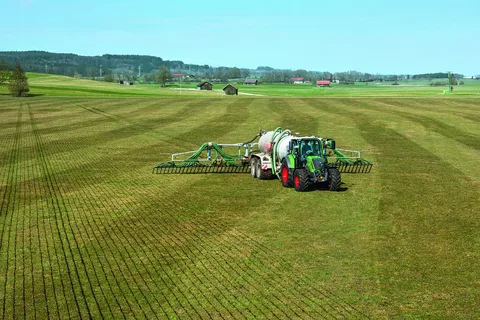Soil compaction is a major challenge in modern agriculture. Heavy machinery, repeated passes over the same field, and improper driving techniques can all lead to compacted soil, reducing water infiltration, root growth, and crop yields. One of the most effective solutions to this problem is the use of tractor guidance system. These advanced technologies help farmers operate machinery more efficiently while minimizing soil damage.
Understanding Soil Compaction
Soil compaction occurs when soil particles are pressed together, reducing pore space. This makes it harder for water, air, and nutrients to penetrate the soil. Over time, compacted soil can decrease crop productivity and increase the risk of erosion. Traditionally, farmers have relied on careful manual driving and crop rotation to manage compaction. However, these methods often fall short in large-scale operations.
What Are Tractor Guidance Systems?
Tractor guidance systems are precision farming tools that use GPS, sensors, and automation to guide agricultural machinery accurately across fields. These systems can range from basic assisted steering to fully autonomous tractors. By following optimized paths, guidance systems help reduce overlapping passes and avoid unnecessary driving over the same soil areas.
How Tractor Guidance Systems Reduce Soil Compaction
One of the key benefits of tractor guidance systems is their ability to reduce soil compaction. Here’s how:
- Precision Driving: Guidance systems allow tractors to follow exact tracks, minimizing the number of passes over the field. Fewer passes mean less soil pressure and reduced compaction.
- Optimized Field Coverage: These systems plan efficient routes for machinery, avoiding repeated overlap and unnecessary soil disturbance.
- Consistent Weight Distribution: Advanced guidance systems can integrate with variable-rate technology to adjust implement depth and weight, reducing the stress on the soil.
By implementing these technologies, farmers can maintain healthier soil structure, improve crop yields, and reduce long-term soil degradation.
Additional Benefits
Besides reducing soil compaction, tractor guidance systems also increase fuel efficiency, save time, and improve overall farm productivity. Farmers can operate machinery with greater accuracy, even in low visibility conditions, ensuring optimal planting, fertilizing, and harvesting.
Conclusion
In conclusion, understanding how tractor guidance systems reduce soil compaction is essential for modern agriculture. By using precise navigation, optimized routing, and advanced weight management, these systems protect soil health while improving operational efficiency. As technology continues to advance, tractor guidance systems will play an increasingly important role in sustainable farming practices.


